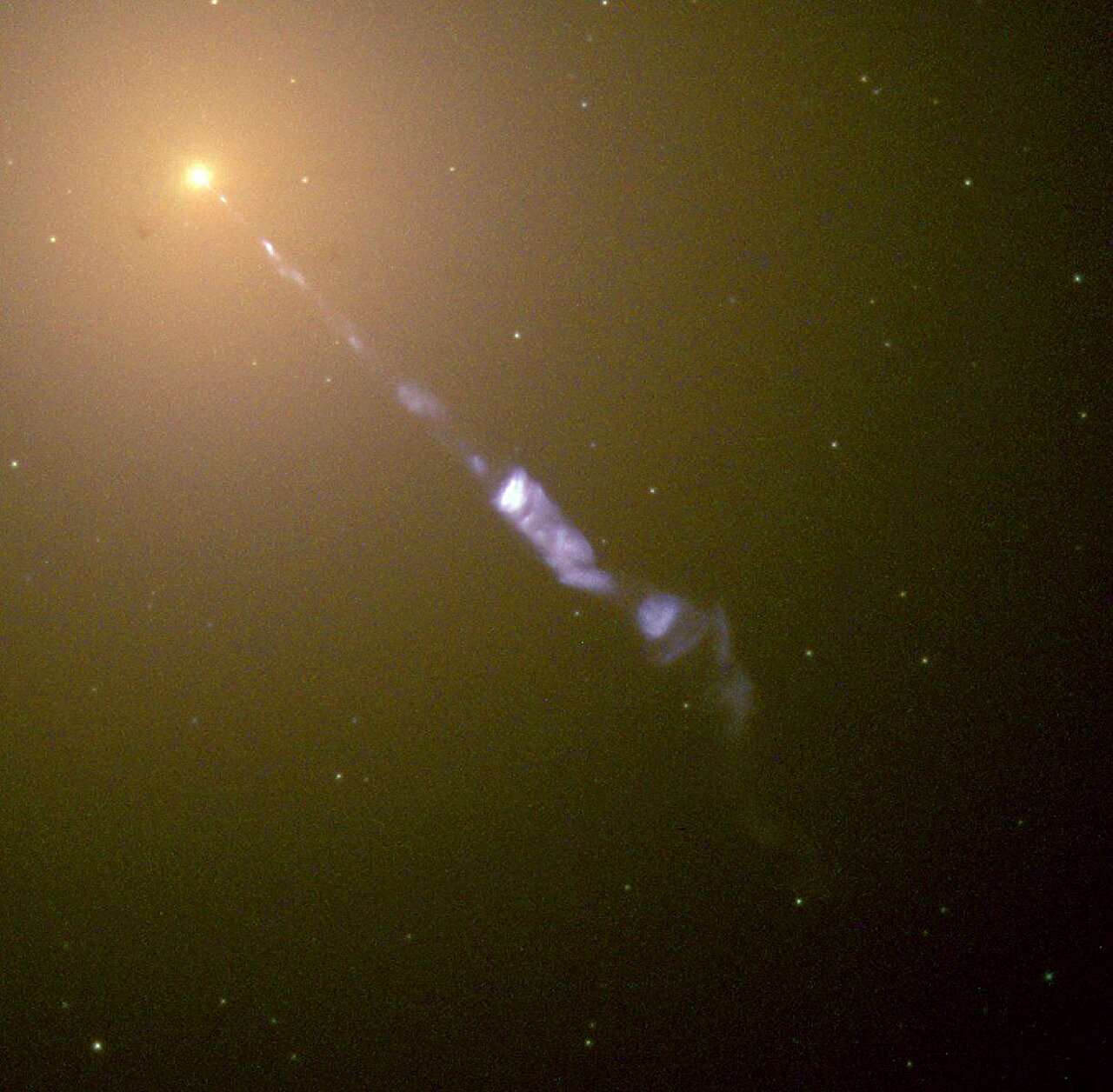Scientists have found out that there are unusually many new stars in the vicinity of the jet emanating from the black star in the center of the galaxy M87. These phenomena occur when a lot of material falls on a white dwarf from a companion star.

Jet of a black hole and new stars
The supermassive black hole at the center of the galaxy M87 continues to generate sensations. A few years ago, it became the first such object, the image of which was obtained by terrestrial astronomers. Recently, studying the jet that comes from its pole, they determined that it rotates.
The new discovery is also related to this flow of matter, which occurs due to the fact that a supermassive black hole cannot “swallow”. Scientists used data from two independent Hubble telescope studies to discover new stars in it. They found 135 of them.
New stars are powerful explosions that occur on white dwarfs that are part of close binary systems. Their gravity pulls some of the material from the companion stars and it forms a new shell around them, which, after reaching a certain mass, flares up. The white dwarf is not destroyed, and everything repeats again.
It is unusual in the case of the galaxy M87 that a very significant number of new stars in it are located near the jet that comes out of the supermassive black hole. These two phenomena should not be related in any way, but the probability that white dwarfs lined up along the same line is only 0.3 percent.
Because of what novae are formed in this area
Although the relativistic jet coming out of a black hole and stretching for 5,000 light-years is an extremely powerful phenomenon, scientists are not sure how it can affect the appearance of novae. In one theory, it heats up binary systems on its way and this facilitates the flow of matter to white dwarfs. As a result, flares should occur more often.
However, scientists have serious doubts about the reality of such a scenario. After all, the energy of the jet is low, and the stars are small, so the transfer of sufficient heat to them looks extremely unlikely. Also, the theory that the flow of matter accelerates star formation is rather dubious. There are simply more dual systems.
This possibility is provided by theory and is confirmed by some observations. However, in this case, there should be an increased number of novae from the other side of the galaxy M87, and this cannot yet be confirmed.
Therefore, scientists have considered several more explanations. Perhaps, for example, jet shock waves combine gas and dust as it moves through the galaxy, forming clouds of interstellar medium. When one of these clouds reaches a binary star system, it will increase the rate of accumulation of material, launching a nova. Similarly, a shock wave can also heat a star (more efficiently than radiation), increasing the mass transfer rate.
According to phys.org
Follow us on Twitter to get the most interesting space news in time
https://twitter.com/ust_magazine
